2-Bromo-1-(2-chlorophenyl)ethanone
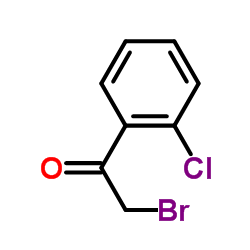
2-Bromo-1-(2-chlorophenyl)ethanone structure
|
Common Name | 2-Bromo-1-(2-chlorophenyl)ethanone | ||
|---|---|---|---|---|
| CAS Number | 5000-66-8 | Molecular Weight | 233.490 | |
| Density | 1.6±0.1 g/cm3 | Boiling Point | 248.9±15.0 °C at 760 mmHg | |
| Molecular Formula | C8H6BrClO | Melting Point | 162-166ºC (20 MMHG) | |
| MSDS | N/A | Flash Point | 104.3±20.4 °C | |
| Symbol |

GHS05 |
Signal Word | Danger | |
| Name | 2-Bromo-2'-chloroacetophenone |
|---|---|
| Synonym | More Synonyms |
| Density | 1.6±0.1 g/cm3 |
|---|---|
| Boiling Point | 248.9±15.0 °C at 760 mmHg |
| Melting Point | 162-166ºC (20 MMHG) |
| Molecular Formula | C8H6BrClO |
| Molecular Weight | 233.490 |
| Flash Point | 104.3±20.4 °C |
| Exact Mass | 231.929047 |
| PSA | 17.07000 |
| LogP | 2.62 |
| Vapour Pressure | 0.0±0.5 mmHg at 25°C |
| Index of Refraction | 1.584 |
| Storage condition | Keep Cold |
Synonym:2-Bromo-2'-chloroacetophenon Section 2 - COMPOSITION, INFORMATION ON INGREDIENTS
Risk Phrases: 34 Section 3 - HAZARDS IDENTIFICATION EMERGENCY OVERVIEW
Causes burns. Potential Health Effects Eye: Causes eye burns. Skin: Causes skin burns. Ingestion: Causes gastrointestinal tract burns. Inhalation: Causes chemical burns to the respiratory tract. Chronic: Not available. Section 4 - FIRST AID MEASURES Eyes: Immediately flush eyes with plenty of water for at least 15 minutes, occasionally lifting the upper and lower eyelids. Get medical aid immediately. Skin: Get medical aid immediately. Immediately flush skin with plenty of water for at least 15 minutes while removing contaminated clothing and shoes. Ingestion: Do not induce vomiting. Get medical aid immediately. Inhalation: Get medical aid immediately. Remove from exposure and move to fresh air immediately. If not breathing, give artificial respiration. If breathing is difficult, give oxygen. Notes to Physician: Treat symptomatically and supportively. Section 5 - FIRE FIGHTING MEASURES General Information: As in any fire, wear a self-contained breathing apparatus in pressure-demand, MSHA/NIOSH (approved or equivalent), and full protective gear. Extinguishing Media: Use foam, dry chemical, or carbon dioxide. Section 6 - ACCIDENTAL RELEASE MEASURES General Information: Use proper personal protective equipment as indicated in Section 8. Spills/Leaks: Absorb spill with inert material (e.g. vermiculite, sand or earth), then place in suitable container. Section 7 - HANDLING and STORAGE Handling: Do not breathe dust, vapor, mist, or gas. Do not get in eyes, on skin, or on clothing. Use only in a chemical fume hood. Storage: Store in a cool, dry place. Store in a tightly closed container. Corrosives area. Section 8 - EXPOSURE CONTROLS, PERSONAL PROTECTION Engineering Controls: Facilities storing or utilizing this material should be equipped with an eyewash facility and a safety shower. Use adequate ventilation to keep airborne concentrations low. Exposure Limits CAS# 5000-66-8: Personal Protective Equipment Eyes: Not available. Skin: Wear appropriate protective gloves to prevent skin exposure. Clothing: Wear appropriate protective clothing to prevent skin exposure. Respirators: Follow the OSHA respirator regulations found in 29 CFR 1910.134 or European Standard EN 149. Use a NIOSH/MSHA or European Standard EN 149 approved respirator if exposure limits are exceeded or if irritation or other symptoms are experienced. Section 9 - PHYSICAL AND CHEMICAL PROPERTIES Physical State: Liquid Color: colorless - pale yellow Odor: Not available. pH: Not available. Vapor Pressure: Not available. Viscosity: Not available. Boiling Point: 162 - 166 deg C @ 20mmHg Freezing/Melting Point: Not available. Autoignition Temperature: Not available. Flash Point: Not available. Explosion Limits, lower: Not available. Explosion Limits, upper: Not available. Decomposition Temperature: Solubility in water: Specific Gravity/Density: Molecular Formula: C8H6BrClO Molecular Weight: 233.49 Section 10 - STABILITY AND REACTIVITY Chemical Stability: Not available. Conditions to Avoid: Incompatible materials. Incompatibilities with Other Materials: Strong oxidizing agents. Hazardous Decomposition Products: Hydrogen chloride, chlorine, carbon monoxide, carbon dioxide, hydrogen bromide, bromine. Hazardous Polymerization: Has not been reported Section 11 - TOXICOLOGICAL INFORMATION RTECS#: CAS# 5000-66-8 unlisted. LD50/LC50: Not available. Carcinogenicity: 2-Bromo-1-(2-chlorophenyl)ethan-1-one - Not listed by ACGIH, IARC, or NTP. Section 12 - ECOLOGICAL INFORMATION Section 13 - DISPOSAL CONSIDERATIONS Dispose of in a manner consistent with federal, state, and local regulations. Section 14 - TRANSPORT INFORMATION IATA Shipping Name: CORROSIVE LIQUID, ACIDIC, ORGANIC, N.O.S.* Hazard Class: 8 UN Number: 3265 Packing Group: III IMO Shipping Name: CORROSIVE LIQUID, ACIDIC, ORGANIC, N.O.S. Hazard Class: 8 UN Number: 3265 Packing Group: III RID/ADR Shipping Name: CORROSIVE LIQUID, ACIDIC, ORGANIC, N.O.S. Hazard Class: 8 UN Number: 3265 Packing group: III Section 15 - REGULATORY INFORMATION European/International Regulations European Labeling in Accordance with EC Directives Hazard Symbols: C Risk Phrases: R 34 Causes burns. Safety Phrases: S 26 In case of contact with eyes, rinse immediately with plenty of water and seek medical advice. S 36/37/39 Wear suitable protective clothing, gloves and eye/face protection. S 45 In case of accident or if you feel unwell, seek medical advice immediately (show the label where possible). WGK (Water Danger/Protection) CAS# 5000-66-8: No information available. Canada None of the chemicals in this product are listed on the DSL/NDSL list. CAS# 5000-66-8 is not listed on Canada's Ingredient Disclosure List. US FEDERAL TSCA CAS# 5000-66-8 is not listed on the TSCA inventory. It is for research and development use only. SECTION 16 - ADDITIONAL INFORMATION N/A |
| Symbol |

GHS05 |
|---|---|
| Signal Word | Danger |
| Hazard Statements | H314 |
| Precautionary Statements | P280-P305 + P351 + P338-P310 |
| Personal Protective Equipment | Faceshields;full-face respirator (US);Gloves;Goggles;multi-purpose combination respirator cartridge (US);type ABEK (EN14387) respirator filter |
| Hazard Codes | C:Corrosive; |
| Risk Phrases | R34 |
| Safety Phrases | S26-S36/37/39-S45 |
| RIDADR | UN 2922 8/PG 2 |
| WGK Germany | 3 |
| Packaging Group | II |
| Hazard Class | 8 |
| HS Code | 2914700090 |
|
~81% 
2-Bromo-1-(2-ch... CAS#:5000-66-8 |
| Literature: Denny, William Alexander; Hutchings, Richard H; Johnson, Douglas S; Kaltenbronn, James Stanely; Lee, Ho Huat; Leonard, Daniele Marie; Milbank, Jared Bruce John; Repine, Joseph Thomas; Rewcastle, Gordon William; White, Andrew David Patent: US2004/44057 A1, 2004 ; |
|
~83% 
2-Bromo-1-(2-ch... CAS#:5000-66-8 |
| Literature: Chen, Zheng-Wang; Ye, Dong-Nai; Ye, Min; Zhou, Zhong-Gao; Li, Shen-Huan; Liu, Liang-Xian Tetrahedron Letters, 2014 , vol. 55, # 7 p. 1373 - 1375 |
|
~% 
2-Bromo-1-(2-ch... CAS#:5000-66-8 |
| Literature: Kumar, Sunil; Gawandi, Vijay B.; Capito, Nicholas; Phillips, Robert S. Biochemistry, 2010 , vol. 49, # 36 p. 7913 - 7919 |
|
~% 
2-Bromo-1-(2-ch... CAS#:5000-66-8 |
| Literature: Lutz et al. Journal of Organic Chemistry, 1947 , vol. 12, p. 617,680 |
| Precursor 4 | |
|---|---|
| DownStream 7 | |
| HS Code | 2914700090 |
|---|---|
| Summary | HS: 2914700090 halogenated, sulphonated, nitrated or nitrosated derivatives of ketones and quinones, whether or not with other oxygen function Tax rebate rate:9.0% Supervision conditions:none VAT:17.0% MFN tariff:5.5% General tariff:30.0% |
| MFCD00832993 |
| 2-Bromo-2′-chloroacetophenone |
| Ethanone, 2-bromo-1-(2-chlorophenyl)- |
| 2-Bromo-1-(2-chlorophenyl)ethanone |
| 2-Bromo-2‘-chloroacetophenone |


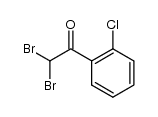


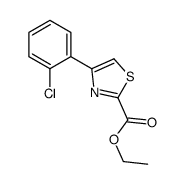 CAS#:1050507-06-6
CAS#:1050507-06-6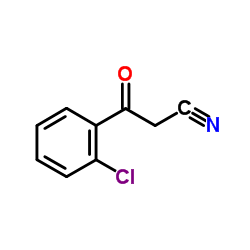 CAS#:40018-25-5
CAS#:40018-25-5 CAS#:743357-99-5
CAS#:743357-99-5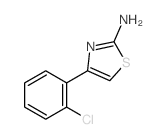 CAS#:21344-90-1
CAS#:21344-90-1 CAS#:72702-57-9
CAS#:72702-57-9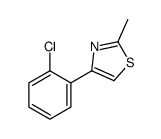 CAS#:777853-12-0
CAS#:777853-12-0 CAS#:60850-73-9
CAS#:60850-73-9
